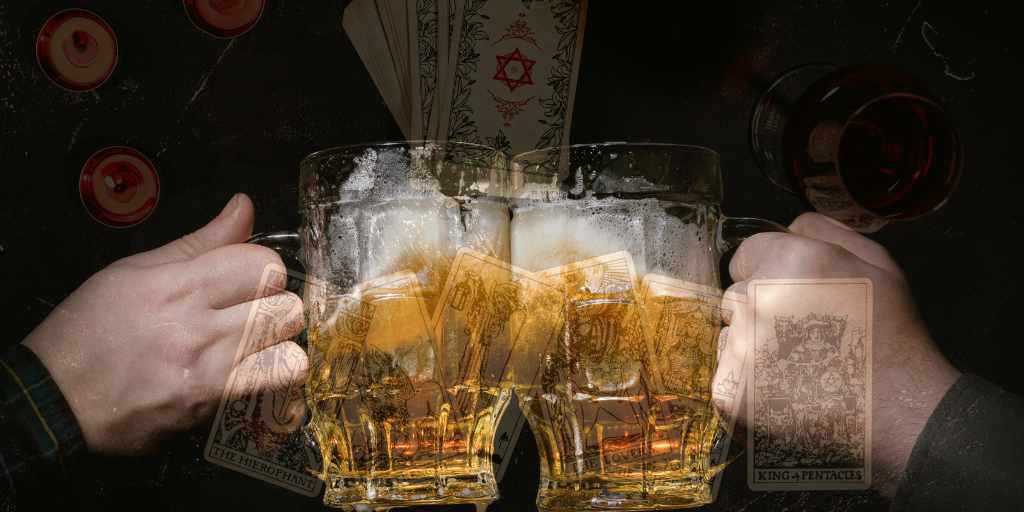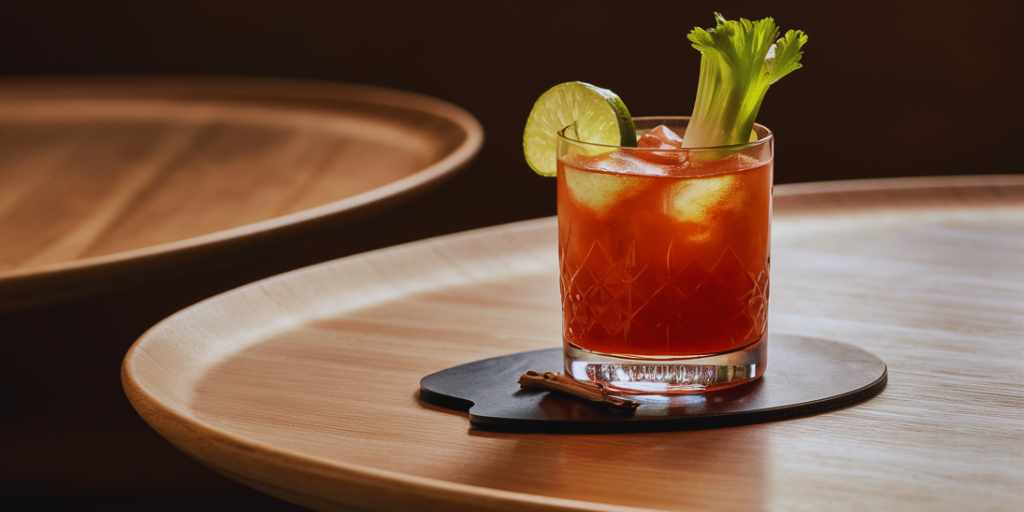Bartending is an art form that requires skill, precision, and creativity. But it’s not just a job; it’s a way of life. Bartenders have a long-standing tradition of following beliefs and superstitions passed down through generations. From throwing out the first drink to tapping the bar, these rituals have become an integral part of the bartending world. In this blog post, we will explore the fascinating history of bartender superstitions, common beliefs, famous legends and their rituals, strange superstitions, and the science behind debunking some of them. Join us on this journey to discover the myths, legends, and beliefs surrounding bartender superstitions.
The History of Bartender Superstitions
Bartending has been around for centuries, and with it, the tradition of superstitions and beliefs. Many of these beliefs stem from the early days of bartending when drinks were not always of the highest quality. Bartenders would often pour the first drink out to ensure that any impurities in the liquor would be eliminated. This practice became a ritual that has persisted to this day.
Superstitions also evolved from the days when bars were often in seedy locations, and bartenders needed to protect themselves and their customers. Tapping the bar was a way to check for hidden compartments where weapons could be hidden, and spilling spirits was a way to ward off evil spirits that may have been present in the bar.
As bartending became more of an art form, superstitions evolved as well. Lucky and cursed items, such as rabbits’ feet and black cats, became popular in bars. These items were believed to bring good luck or ward off bad luck.
Culture and geography also played a role in the development of bartender superstitions. In some countries, placing an upside-down bottle on the bar is believed to bring bad luck, while in others, it is believed to bring good luck.
Despite the changing times, bartender superstitions and beliefs have persisted. They continue to be an important part of the bartending world, and many still adhere to these rituals today.
Common Bartender Superstitions
Many common beliefs and superstitions in the bartending world are still practised today. Here are a few examples:
- Throwing out the first drink: As mentioned earlier, this tradition dates back to the days when bartenders would pour out the first drink to eliminate any impurities in the liquor. Today, many bartenders still pour out the first drink as a sign of respect to their customers.
- Tapping the bar: Tapping the bar is a common ritual believed to ward off evil spirits. Some bartenders tap the bar three times before making a drink, while others tap it only once.
- Spilling spirits: Some bartenders believe that spilling spirits is a sign of good luck, while others believe it is a sign of bad luck. Regardless of the belief, many bartenders will purposely spill a little bit of a spirit before making a drink.
- Lucky or cursed items: Many bartenders keep lucky or cursed items behind the bar. These items can include anything from a lucky horseshoe to a cursed bottle of liquor.
- Other common beliefs and superstitions include never pouring with your left hand, always using a clean glass, and never giving someone an empty glass.
While some of these beliefs may seem silly, they are deeply ingrained in the bartending community and are still widely practised today.
Bartending Tools Superstitions
A few superstitions revolve around the tools of the trade for bartenders. Here are a few examples:
- The Cocktail Shaker – Some bartenders believe that shaking a cocktail with a lot of ice will dilute the drink too much. To avoid this, they shake with just a few cubes of ice. However, this is not a hard and fast rule, and many bartenders prefer to shake with a lot of ice to create a perfectly chilled and well-diluted cocktail.
- The Strainer – There is a belief that putting a strainer down on the bar top will bring bad luck. To avoid this, some bartenders will always place the strainer on top of the shaker.
- The Muddler – Some bartenders believe using a wooden muddler instead of a metal one will make the drink taste better. However, there is no scientific evidence to support this belief.
- The Jigger – Some bartenders believe that using a jigger to measure out ingredients is less accurate than free-pouring. However, studies have shown that using a jigger is actually more accurate and ensures consistency across drinks.
These are just a few examples of the superstitions around bartender tools. As with any superstition, it’s important to remember that they are just beliefs and not based on fact or evidence.
Lucky Ingredients
There are many lucky ingredients that bartenders believe can bring good fortune to their drinks. While these beliefs may seem superstitious to some, they have been passed down through generations of bartenders and continue to influence the way drinks are made and served today. Whether you believe in lucky ingredients or not, there’s no denying the unique and fascinating world of bartender superstitions.
Here are some examples:
- Mint – believed to bring good luck and money.
- Lemon – thought to ward off evil spirits and bring good luck
- Cinnamon – is believed to attract good luck, money, and success.
- Honey – thought to bring sweetness and good fortune to drinks
- Ginger – is believed to bring good health, wealth, and luck.
- Orange – thought to bring prosperity and good luck to the drinker.
- Cloves – believed to have protective properties and bring good luck and wealth
- Basil – thought to have a calming effect and bring good luck and prosperity.
- Rosemary – is believed to bring good luck and protection from evil spirits.
- Nutmeg – is thought to bring good luck, health, and happiness to those who consume it.
Bartenders often incorporate these lucky ingredients into their cocktails and drinks to bring good fortune to their customers. For example, a mojito made with fresh mint may be seen as a lucky drink, as it is believed to bring money and prosperity to the person who drinks it. Similarly, a hot toddy made with honey and cinnamon may be considered lucky, as these ingredients are believed to bring success and wealth.
Famous Bartender Legends and Their Superstitions
Over the years, there have been many famous bartenders who have become legendary in the industry. These bartenders often have their own unique superstitions and rituals that have become part of their legacy. Here are a few examples:
- Harry Craddock – The Savoy Cocktail Book is one of the most famous cocktail books of all time, and it was written by Harry Craddock, who worked at the Savoy Hotel in London during the 1920s and 30s. Craddock was known for his meticulous attention to detail and belief in the perfect cocktail’s power. One of his superstitions was that he would never use the same ice twice, believing that the ice would absorb the energy of the previous drink and affect the taste of the next one.
- Ada Coleman – Known as “Coley,” Ada Coleman was the head bartender at the Savoy Hotel in London during the early 1900s. She was the first female head bartender at the hotel, and she quickly became famous for her Hanky Panky cocktail, created for actor Sir Charles Hawtrey. Coleman was known for her attention to detail and belief in the perfect cocktail’s power. She always wore a corsage while making drinks, believing it brought her good luck.
- Jerry Thomas – Known as the “father of American mixology,” Jerry Thomas was a legendary bartender who worked in the mid-1800s. He was famous for his showmanship and his ability to create complex cocktails. Thomas was known to wear a red vest while working behind the bar, and he believed that it brought him good luck. He was also known to have a lucky gold watch that he would wear while working.
These famous bartenders and their superstitions have become part of bartending lore and have inspired generations of bartenders to follow in their footsteps. Whether wearing a lucky corsage or using fresh ice for every drink, these superstitions continue to be an important part of the bartending community.
Strange Beliefs and Superstitions
While many bartender superstitions are rooted in tradition and history, some strange and unusual beliefs have developed over time. Here are a few examples:
- The Curse of the Irish Whiskey – There is a belief among some bartenders that Irish whiskey should never be used in a cocktail. The history of this superstition is unclear, but some believe it is because Irish whiskey is meant to be enjoyed on its own and should not be mixed with other ingredients.
- The Power of the Number Three – Many bartenders believes that three is a lucky number and that drinks should always be stirred or shaken three times. Some also believe that if a customer orders a drink with three ingredients, it is a sign of good luck.
- The Dangers of Spilled Salt – Spilling salt is considered bad luck in many cultures, and bartenders are no exception. Some believe that spilling salt can lead to fights or other negative events, while others believe it can lead to a slow night at the bar.
- The Importance of the Last Drop – Some bartenders believe that the last drop of a bottle should never be poured into a customer’s glass. Instead, it should be poured onto the floor or into a separate container. This is believed to be a sign of respect for the spirits and the customer.
- Cheers Superstitions – In many cultures, there are specific rituals or superstitions around toasting with beer and wine. For example, in Germany, it’s considered bad luck to toast with a glass of water instead of beer.
- Drinking From a Boot – In some places, it’s believed that drinking beer from a boot-shaped glass or container brings good luck. However, this is likely more of a tradition or cultural practice than a true superstition.
Beer Superstitions
Some of the most common beer superstitions include:
- Never cheers with an empty glass: It is believed to bring bad luck to cheers with an empty glass, as it symbolizes that you have nothing to offer. It is also believed to be disrespectful to the other person.
- Always clink glasses: When you cheers, making a clinking sound with your glasses is important. It is said that the clinking sound scares away evil spirits so they can’t ruin your enjoyment of the beer.
- Don’t cross your arms while cheersing: Crossing your arms while cheersing is believed to bring bad luck, as it is said to block the positive energy that is created when people come together to celebrate.
- Don’t cheers with water: In some cultures, it is believed to be bad luck to cheers with water, as water is often associated with cleansing and purification. It is said that toasting with water will wash away all the good luck and positive energy.
- Pour beer with care: It is believed that pouring beer too aggressively or with too much force can release negative energy, so it’s important to pour your beer carefully.
- Spilt Beer: Spilling beer is generally seen as bad luck, and some believe that it’s a sign that money will be lost soon.
- Beer Foam: In some cultures, the amount of foam on top of a beer is believed to predict the drinker’s future. If the foam is thick and creamy, it’s said to be a good omen, while thin and quickly dissipating foam is seen as a bad sign.
Wine Superstitions
Wine has its own superstitions passed down through generations of winemakers and enthusiasts. Some of the most common wine superstitions include:
- Red wine brings good luck: In many cultures, it is believed that drinking red wine can bring good luck and prosperity. Some even believe that spilling a little bit of red wine on the ground will bring good luck to your home.
- Never turn a bottle upside down: Turning a bottle of wine upside down is believed to bring bad luck, as it is said to symbolize the spilling of blood. This superstition is often taken very seriously in the wine industry, where bottles are always stored upright.
- Cheers with eye contact: In many countries, it is considered bad luck to toast without making eye contact with the person you are toasting. This is believed to bring seven years of bad luck to both the person who made a mistake and the person who failed to make eye contact.
- Don’t cross your arms while toasting: Like with beer, crossing your arms while toasting wine is believed to bring bad luck, as it is said to block the positive energy created when people come together to celebrate.
- Don’t pour your own wine: In many cultures, it is considered bad luck to pour your wine. Instead, it would be best if you allowed someone else to pour it for you, as this is believed to bring good luck and prosperity.
While these beliefs and superstitions may seem strange to outsiders, they are an important part of the bartending community and have been passed down from generation to generation. Whether it’s the power of the number three or the dangers of spilt salt, these beliefs and rituals are a way for bartenders to connect with their customers and create a sense of community behind the bar.
Debunking Bartender Superstitions
While many bartender superstitions have been around for generations and are deeply ingrained in the culture of bartending, others are simply myths perpetuated over time. Here are a few superstitions that have been debunked:
- Liquor Before Beer, You’re in the Clear – This old saying suggests that drinking liquor before beer won’t get sick. However, this is not true. The order in which you drink alcohol does not affect how sick you may or may not get.
- Blowing on a Shaker – Some bartenders believe that blowing on a shaker will help chill the drink faster. In reality, blowing on a shaker can introduce bacteria from your mouth into the drink, which is a health hazard.
- The Lime Wedge – Many people believe that rubbing a lime wedge on the rim of a glass before adding salt will help the salt stick. However, this is not true. The lime juice will make the salt slide off more easily.
While some bartender superstitions may have some basis in truth, others are simply myths or beliefs passed down over time. As with any industry, it’s important to separate fact from fiction and rely on evidence-based practices to ensure the best possible customer experience.
Conclusion
Bartender superstitions may seem strange to outsiders, but they are an important part of the bartending community. Many of these beliefs and rituals date back centuries and have evolved to become a part of the bartending culture. While some bartenders may not adhere to these superstitions, many still do and believe that they bring good luck and ward off bad luck.
Whether it’s tapping the bar or spilling spirits, these rituals and beliefs allow bartenders to connect with their customers and create a welcoming environment. And while some may view these practices as unnecessary, they remain an important part of the bartending tradition.
So the next time you order a drink at your local bar, take a moment to appreciate the history and tradition behind bartender superstitions. Who knows, it might just bring you some good luck!




